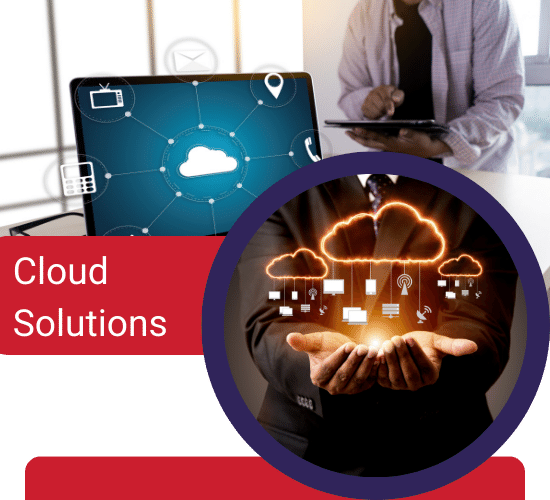Cloud services refer to the delivery of computing resources, including applications, storage, and infrastructure, over the internet.


More powerful Mericas cloud expertise, services and partnerships. Enabling your organization to innovate and scale through shared capabilities, processes and data on demand. Concentrate your processing power into one secure cloud platform and make bold, confident, insightful advances.
Cloud services refer to the delivery of computing resources, including applications, storage, and infrastructure, over the internet. These services are typically provided by third-party providers, commonly known as cloud service providers (CSPs). Customers or subscribers can access and utilize these services on-demand, paying for what they use, similar to a utility or a pay-as-you-go model.
Utilizing cloud services enables you to delegate infrastructure management and concentrate just on using it. The service provider you select will assist with a variety of operations that keep your company running, including application processing and exchange, data storage, and management. Your IT organization will not need to monitor, maintain, or back up the activity as your authorized users can interact, collaborate, manage projects, and analyze, process, share, and save data using these services.
Big Data refers to the enormous volumes of information that corporations like Facebook and Amazon gather to comprehend consumer behavior. Nowadays, the majority of businesses base their sales, marketing, R&D, and other choices on their own consumer data. This data may be managed, stored, and analyzed via cloud services, which provide a significant benefit—an IaaS use case.
Thanks to the cloud’s adaptability; users may swiftly develop, test, and destroy environments. For highly iterative processes like software development, where provisioning once took months, it may now be completed in a matter of minutes. With PaaS, developers can focus on development without having to worry about upkeep.
Possibly the first cloud service ever provided, email can be used without the need to install any software on a local computer. In case of SaaS usage, the application is hosted in the cloud.
Businesses frequently utilize IaaS for web hosting so they can scale up and down rapidly and automatically as traffic changes and distribute the strain of traffic over numerous servers. The procedure is streamlined and much of the administrative work and maintenance is eliminated – thanks to the ability to provision and conduct automated scaling.
The three primary categories of cloud computing services are as follow. Each time, the underlying cloud infrastructure is maintained by the service providers. Depending on the demands of the customer, the provider may or may not manage additional computing resources.
Subscribers can design a full environment using IaaS by setting up a virtual network that is divided from other networks. Users run an operating system in this environment and set up the networks, processing power, storage, and other essential computer resources required to run software on the cloud infrastructure. The subscriber may also have restricted control over a few networking elements using IaaS (for example, host firewalls). Some service providers will additionally provide additional services like security, load balancing, monitoring, automation, and storage resiliency.

Subscribers can use a provider's software that is hosted on a cloud infrastructure, making it accessible and broadly distributed. Productivity suites, customer relationship management (CRM) software, human resources management (HRM) software, and data management software are among the popular business technology categories hosted by SaaS vendors. Users can choose between using a program interface or a thin client interface, like a web browser, to access the application(s). Subscribers to this service are only permitted to access and utilize the software. Everything else is managed and controlled by the provider, including the network, servers, operating systems, storage, virtualization, data, middleware, and even specific application features. SaaS applications are typically made to be user-friendly for a larger audience.

Users have a little bit more control over PaaS than SaaS because they have access to a framework that starts with the operating system. Using the programming languages, libraries, services, and tools that the provider supports, PaaS enables customers to upload their own applications to the cloud infrastructure. The installed apps, the data, and perhaps even the configuration options for the application-hosting environment are all under the subscriber's control. But the provider is in charge of and manages the network, servers, operating systems, and storage.

There are numerous alternative service models that are classified as XaaS but do not properly fall within the first three headings. They can be almost anything as a service and frequently have more specific offerings. A few examples include monitoring, communications, and disaster recovery as a service.
Fill out the form below and we will get back to you within the next 24
hours to complete the order, and then you’re all set to get started!